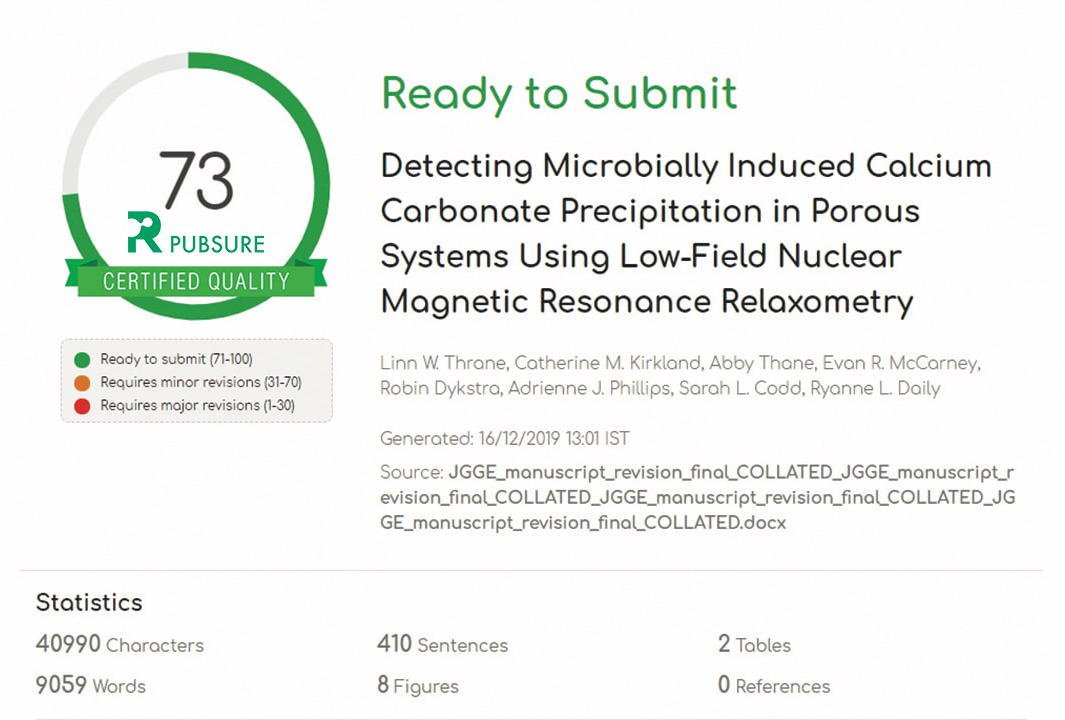Is the growth of preprints eroding trust in peer review?

Preprints refer to scientific manuscripts uploaded on public servers, which are freely available for the world to view and comment on. However, preprints often fail the quality and trust test as they are not subject to conventional peer review processes. On the other hand, the opportunity to gather feedback from multiple experts in your field makes preprints a viable option for authors. As the world comes together for Peer Review Week, we look at the benefits and challenges of preprints, and whether its growing popularity is eroding trust in peer review.
THE ADVANTAGES OF PREPRINT PUBLISHING
Here’s why preprints are quickly gaining popularity as a preferred form of publishing.
- Accelerating science and establishing primacy
Once submitted to a peer-reviewed journal, your manuscript undergoes numerous checks, reviews and revision requests, before it is accepted or rejected – a process that can take several months. The long wait times brings with it the danger of others publishing papers on the same idea or your study being deemed obsolete while you wait to be published. This problem has fuelled a shift to preprints, which can help establish your priority on an idea or discovery while also accelerating science dissemination. All you need to do is upload your paper on a preprint server, wait until it passes the basic checks and, within days your paper is assigned a DOI and posted for the world to find and cite, ensuring that important research is shared without delay and that you receive the credit you deserve.
This shift is even more visible now as we battle a global pandemic and race against time to develop a viable vaccine. We need to expedite new findings, but traditional publishing models are just not working fast enough. For instance, despite enhancements in staffing and other facilities to fast-track the review cycle, the acceptance rate of New England Journal of Medicine (NEJM) has only been 2% of the approximately 2,000 COVID-19 papers it receives a month, whereas two of the leading preprint servers, bioRxiv and medRxiv have collectively hosted 3,000+ papers related to studies on COVID-19.1
- Making research more accessible and driving impact
Science is additive, building on previous research, and the only way we can ensure progress and growth is if this research is made available beyond the notorious paywall. Data shows that 65% of the world’s 100 most cited papers are still locked behind a paywall, which means that the world’s most important research is inaccessible to the masses.2 This inaccessibility means authors may often face rejection for null findings or replicated studies by top journals looking for novelty in submissions.
Here, preprints provide a free and simple solution by making a range of research more accessible. Not only do preprints allow you to publish online free of cost, it also ensures the latest research is freely available to a broad audience, including non-governmental organizations, independent researchers and academics, educators, and the media. In fact, preprints can also be cited and easily shared, which means your work gets attention even before it is officially published in a journal.
- Increase research visibility and boost collaborations
When approaching funding bodies for a grant or hiring committees for a job, you often need to provide some evidence of your research and preprints can be a great way to showcase your work. Posting your paper on preprint servers can also work to your advantage when it comes to attracting opportunities to present at conferences and seminars. Similarly, publishing preprints is a great way to connect with researchers in your field for potential collaborations on high-impact research projects.
- Open community review before the journal peer review
Since they are uploaded on online repositories for free viewing, preprints allow you to showcase your research to experts in your field who can offer valuable feedback and help you progress in your scientific quest. James Fraser, an assistant professor at University of California, San Francisco (UCSF), recommends preprint publishing for better science, saying, "Posting preprints offers people the chance to be more thoroughly evaluated, which is especially beneficial for younger scientists.”3
This is supported by data which shows that 71% of bioRxiv users received feedback on their preprints.4 Researchers who upload a copy of their manuscript on preprint repositories, can receive instant feedback that helps identify critical flaws in the study, and improve the quality of their work before journal submission through feedback from researchers in the same field. Feedback is also likely to be shared on other channels like social media, conferences, or emails using the author’s contact information on the server. For instance, preprints are publicized by ChemRxiv on their Twitter account, often leading to further dissemination and discussion of a piece of new research.
THE CHALLENGES OF PREPRINT PUBLISHING
While there are great benefits to preprints, there is also a cost to experiencing science in real time. Unrefereed papers submitted to preprint servers are often also viewed as a risk to scientific integrity, the very premise behind the peer review process. In a recent article by The New York Times, Eric Topol, a member of bioRxiv’s advisory board warned, “Anyone who reads a preprint will embrace it almost in a blind fashion,” and cherry-pick information that fits their worldview.
Uncertainty and the lack of enough information to fight an unknown threat like the novel coronavirus fuels the unintended side-effects of preprints. To stand out in a pool of data, preprints are known to have attention-grabbing research results that get quickly shared far and wide. Recently, when a group of researchers uploaded a paper on a preprint server that claimed that the new Sars-CoV-2 is similar to HIV, the paper spread like wildfire across news outlets and social media sites, fuelling some bizarre theories and conspiracies.
The sheer number of papers published on preprint servers also makes it difficult to sort through and find important quality research. It also makes differentiating relevant and authentic scientific findings from fake news particularly challenging. This is harder for the naïve non-scientist, like journalists and the public in general. So is there a way to combat the challenges of preprints and/or increase the pace of peer review?
ENSURING DISSEMINATION OF QUALITY SCIENCE
Recognizing the scope for the spread of misinformation, preprint repositories are actively announcing that the content they host has not been peer-reviewed, and are therefore, unverified. These servers also spell out the nature of the information in the preprints they post, advising the audience to use the data with caution. To boost transparency, top servers also point readers to the latest versions of a paper, and clearly list the specific reasons for a paper that has been withdrawn.
Additionally, bioRxiv and medRxiv are putting newly uploaded manuscripts through extensive checks, including screening for scientific value and plagiarism. While checks on the former are mainly done by principal investigators (PIs), the latter relies on top healthcare professionals and adds an additional layer by getting manuscripts screened for ethics committee approval, trial registration, informed consent, and conflict of interest. medRxiv has also been rejecting papers based on individual case reports, small sample sizes, and computational modelling, while sending papers that make potentially significant findings for peer review.
Scientists on social media and preprint servers are also being vigilant and generously sharing feedback on newly uploaded preprints. However, the first and most important check must come from the authors themselves, well before they press the submit button. Researchers are responsible for their work, and reputation is key in academia, which makes it critical to ensure you are submitting a clean, error-free paper. So, how can you put your best foot forward and attract journals and publishers? This is where AI-based manuscript submission readiness checks like R Pubsure help!
HOW CAN R PUBSURE HELP PREPRINT AUTHORS
An accurate, secure and comprehensive AI-powered submission readiness check, R Pubsure helps authors eliminate critical errors that can lead to rejection. With detailed checks for language, structure, references, and other key submission criteria, it helps you ensure your paper is submission-ready even before you post it on preprint servers. Get your paper assessed in minutes, improve your work based on the suggestions provided, and receive the shareable R Pubsure Certificate of submission readiness (see screenshot) to ensure you have a submission-ready paper. What’s more, with its journal recommender that matches your work to the best-suited journal, you can boost your chance of acceptance in a peer-reviewed journal.

R Pubsure’s Certificate of submission-readiness
The many checks and measures being put in place by top preprint repositories have helped improve the standard of papers hosted on these platforms, but also reduced the reliance on peer review as a must for quality research. Preprints have several benefits, but this form of publishing is unlikely to replace peer-reviewed journals as the top source of trusted science anytime soon. Until then, regardless of whether you decide to “publish” or “post”, do your bit to ensure the world gets the best version of your science with R Pubsure.
References:
1. I. Syed- The role of preprints in aiding the speedy dissemination of COVID-19 research, 2020. Retrieved from https://www.editage.com/insights/the-role-of-preprints-in-aiding-the-speedy-dissemination-of-covid-19-research
2. J. Nicholson, A. Pepe- 65 out of the 100 most cited papers are paywalled. Retrieved from https://www.authorea.com/users/8850/articles/125400-65-out-of-the-100-most-cited-papers-are-paywalled
3. Socholastica, Authorea- Open Access + Preprints: Journals and scholars take action, 2016. Retrieved from
https://lp.scholasticahq.com/open-access-publishing-preprints/
4. F. Coudert- The rise of preprints in chemistry, 2020. Retrieved from https://www.nature.com/articles/s41557-020-0477-5
Comments
You're looking to give wings to your academic career and publication journey. We like that!
Why don't we give you complete access! Create a free account and get unlimited access to all resources & a vibrant researcher community.














